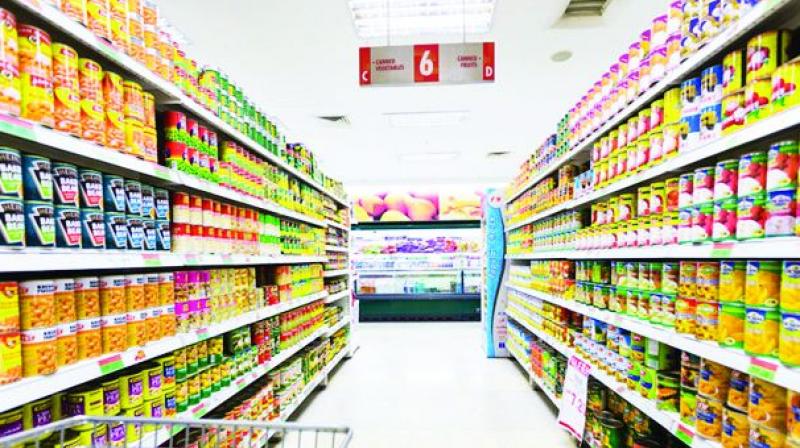Retail Sector's Resurgence: Embracing Tech for Growth
Insights from Retail Summit: Technology integration, sustainability drive growth in India's retail sector, poised to become key GDP contributor

The retail sector has seen some ups and downs in the last few years. The year 2023 was tougher compared to the previous year as 2022 had seen a super growth, mainly due to the euphoria of coming back to shop. Retailers Association of India chief executive officer Kumar Rajagopalan, who was recently in Hyderabad as part of the Hyderabad Retail Summit, feels the retail sector presents significant opportunities for growth and development. By embracing technology, adopting sustainable practices, and receiving the necessary support from policymakers, the sector can emerge as a key driver of economic growth and social progress, he tells in an interaction with B Krishna Mohan
Here are the excerpts:
Outlook
The retail sector's trajectory in recent years has been a story of highs and lows. While 2022 witnessed a remarkable surge in growth, 2023 posed its own set of challenges. However, by March 2024, there was a resurgence across all sectors, signalling a positive shift and a renewed sense of consumer confidence.
Impact of technology
Technology continues to play a pivotal role in reshaping the retail landscape. In today's digital age, consumers expect seamless integration between online and offline shopping experiences, compelling businesses to innovate and adapt. Initiatives like the Open Network for Digital Commerce (ONDC) have empowered small retailers to establish their online presence, with significant traction observed across various segments. Emerging technologies such as video shopping, QR code purchases, and social media commerce are further blurring the lines between physical and digital retail.
Employment
The evolving retail sector is a significant contributor to employment generation. The proliferation of new stores and the rise of direct-to-consumer (D2C) businesses have created a demand for roles in supply chains, logistics, and customer service. Presently, approximately six million people are employed in the formal retail sector, with an additional 43 million engaged in both formal and informal segments, highlighting the sector's importance as a source of livelihood for millions.
Retailers Association of India chief executive officer Kumar Rajagopalan
Key trends
Sustainability and product traceability have emerged as key trends driving industry transformation. Today's consumers are increasingly conscious of environmental and social issues, prompting businesses to adopt sustainable practices throughout their operations. Additionally, government initiatives emphasising quality standards have incentivized retailers to prioritise transparency and accountability in their supply chains.
Retail exports
Efforts to expand retail exports, particularly in high-value segments like garments and electronics, are gaining momentum. Recognising individual retail exports globally could unlock the sector's full export potential, complementing existing bulk export activities. By tapping into international markets and leveraging India's manufacturing capabilities, the retail sector has the potential to significantly contribute to economic growth.
Contribution to GDP
While the retail sector currently accounts for around 15% of India's GDP, there is considerable room for growth. With rising disposable incomes and changing consumption patterns, the sector has the potential to play a more significant role in driving economic prosperity. With the right policy support and investment, the retail sector could contribute up to 30-35% of the GDP, aligning with India's vision of becoming a $5 trillion economy.
Support needed
To realise its full potential, the retail sector requires comprehensive support from policymakers and stakeholders. Streamlining regulatory processes and addressing challenges such as high real estate costs are essential steps in creating a conducive business environment. Recognising retail as a formal industry and implementing best practices from successful models like Telangana's single-window clearance system can further facilitate industry growth and expansion.
Last mile connectivity, packaging
Advancements in last-mile connectivity and sustainable packaging are critical for enhancing operational efficiency and reducing environmental impact. Initiatives such as incentivizing the use of eco-friendly packaging materials and promoting responsible consumption habits can contribute to a more sustainable retail ecosystem. Moreover, investments in electric vehicles and the establishment of recycling infrastructure can further mitigate the sector's carbon footprint and environmental impact.

